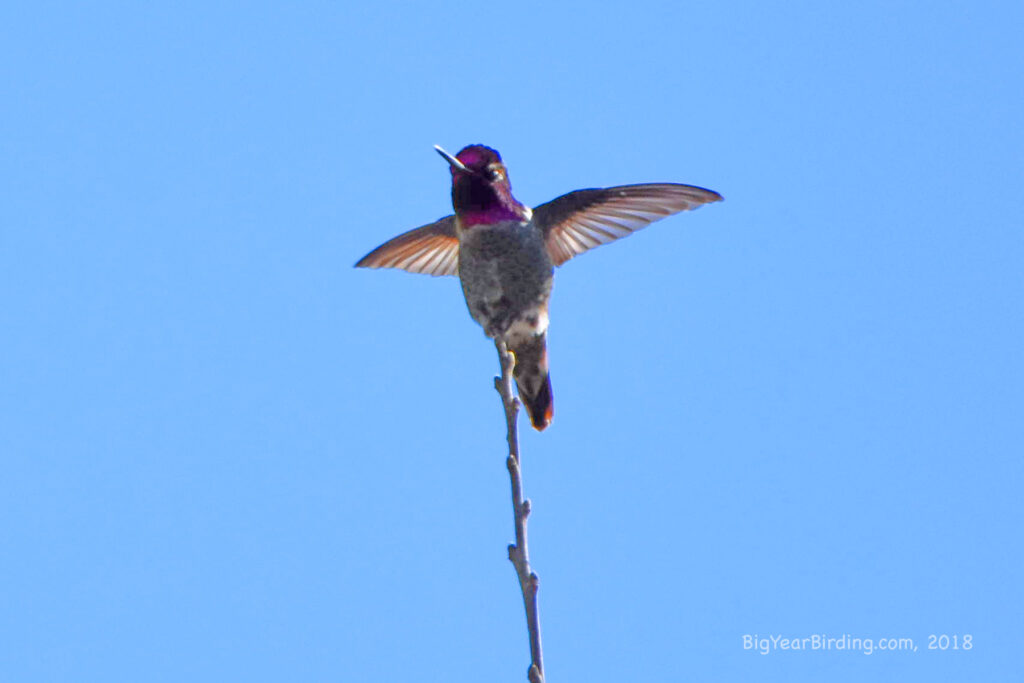
The Costa’s Hummingbird (Calypte costae) is a small, colorful bird that is native to the southwestern United States and Mexico. Adult males are about 3.5 inches long and weigh approximately 0.12 ounces, while females are slightly larger at 3.9 inches long and weigh around 0.14 ounces. Their wingspan is about 4.7 inches.
The male Costa’s Hummingbird has a distinctive purple crown and throat, which can appear almost black in certain lighting conditions. The females are less colorful, with green upperparts and grayish underparts. Both sexes have a long, thin bill, which they use to feed on nectar from flowers.
Costa’s Hummingbirds are mostly sedentary, with some populations being year-round residents of their breeding areas. However, some individuals do migrate short distances in response to changes in food availability. Populations in the northern parts of their range tend to move south in winter, while those in the southern parts may move to higher elevations during the summer months.
During the breeding season, males perform elaborate courtship displays to attract females. These displays involve hovering in front of females and making a series of rapid, high-pitched calls. Females build small, cup-shaped nests using spider silk and plant material, and lay two eggs at a time. The eggs are incubated for around 16-18 days, and the chicks fledge about 20-23 days after hatching.
The Costa’s Hummingbird is an important pollinator of many plants in its range, including agaves, ocotillos, and cacti. However, like many hummingbird species, they face threats from habitat loss, pesticide use, and climate change. Conservation efforts aimed at preserving their habitat and increasing public awareness of their importance as pollinators are crucial to the survival of this species.
